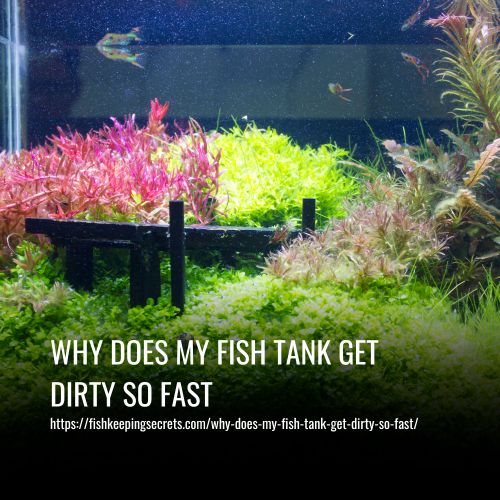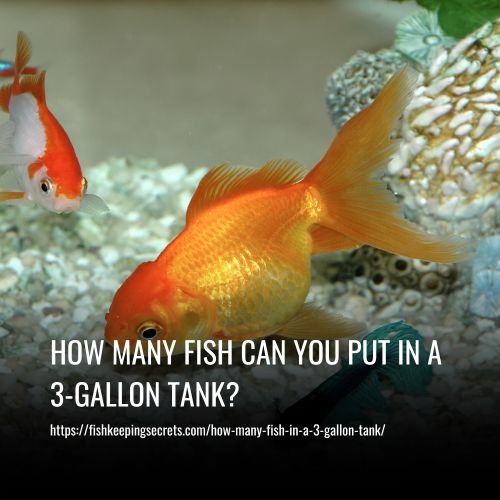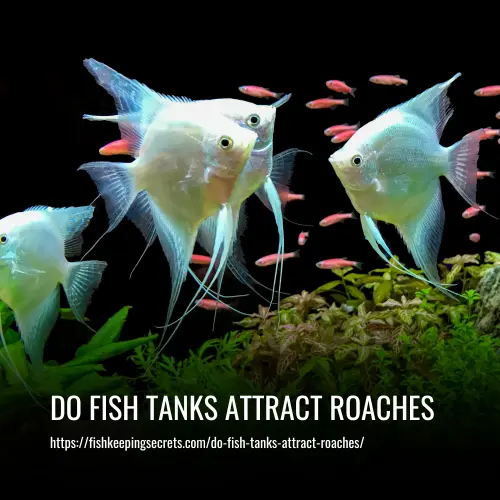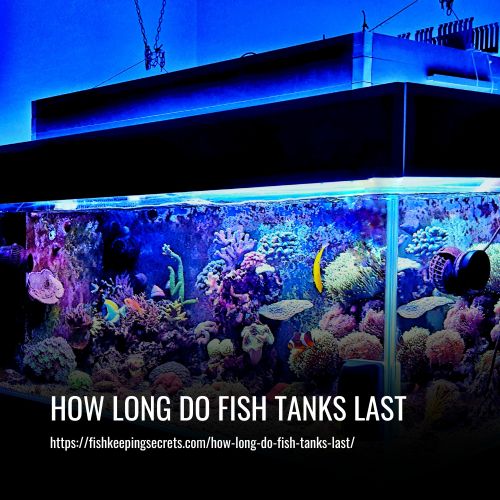How Many Fish Can I Add to a Cycled Tank?
This post contains affiliate links. As an Amazon Associate, we earn from qualifying purchases.
In a cycled tank, you can add one inch of fish per gallon of water. Cycling a fish tank is an essential process before adding any fish.
Once the tank is cycled, it’s crucial not to add too many fish too quickly. Overcrowding can lead to poor water quality, disease, stress, and ultimately, death of the fish. As a general rule, you can add one inch of fish per gallon of water in a cycled tank.
However, it’s important to consider the adult size of the fish and their activity level. Some fish produce more waste than others, and thus require more space. Also, consider the bioload of your tank, which includes factors such as the quality of your filter and the number of live plants in the aquarium. By following these guidelines, you can ensure a healthy and thriving fish tank.
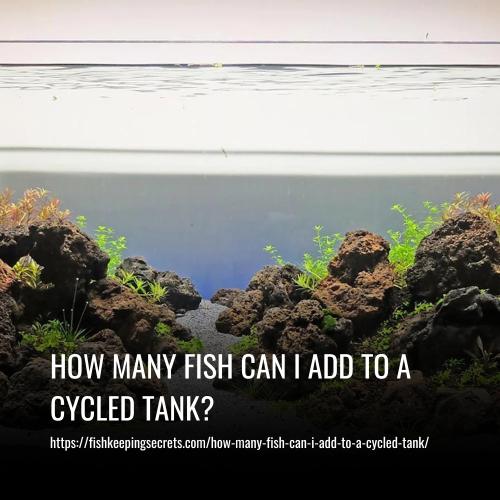
Understanding The Basics Of Aquarium Filtration And Cycling
Aquarium filtration and cycling are crucial components of maintaining a healthy fish tank. Understanding the basics of these processes is essential for any fish owner.
Brief Introduction Of Aquarium Filtration:
Aquarium filtration is a critical aspect of maintaining a healthy aquatic environment. A filter is necessary to remove debris, waste, and harmful toxins from the water. Keeping an aquarium clean is essential when it comes to ensuring the longevity of your fish’s health.
There are various types of filters available on the market, including mechanical, biological, and chemical filters.
The Importance Of Beneficial Bacteria In The Nitrogen Cycle
The nitrogen cycle is a critical process in maintaining a healthy aquarium. Beneficial bacteria are essential during this process as it helps to remove toxic compounds from the water by converting them into less harmful substances. Here are the key points to note about the importance of beneficial bacteria in the nitrogen cycle:
- Beneficial bacteria break down harmful compounds such as ammonia and nitrites into less toxic substances like nitrates, which are less harmful to fish.
- It can take several weeks for the beneficial bacteria to establish themselves in the aquarium.
- Introducing too many fish before an aquarium has fully cycled can lead to the accumulation of toxic compounds, which can be detrimental to the health of your fish.
How Cycling Of The Aquarium Affects Fish Health
Cycling is the process of establishing the beneficial bacteria in your aquarium’s filter. The cycle helps to maintain a healthy aquatic environment by removing toxic compounds from the water. Here are some key points to note about how cycling can affect the health of your fish:
- Cycling helps to establish beneficial bacteria in your aquarium filter, which is necessary to maintain a clean and healthy environment for your fish.
- It is essential to allow your aquarium to fully cycle before introducing any fish. This ensures that the beneficial bacteria have established themselves in the filter and can effectively remove toxic compounds from the water.
- Adding too many fish too quickly can overload the beneficial bacteria, leading to an accumulation of toxic compounds, causing stress and health problems to the fish.
- The cycle can take several weeks to complete, so patience is essential when it comes to setting up a cycled tank.
Understanding the basics of aquarium filtration and cycling is crucial when it comes to maintaining a healthy aquatic environment. By establishing beneficial bacteria and cycling your aquarium, you can ensure the longevity and well-being of your fish. Remember to take your time and allow your aquarium to fully cycle before adding any fish, and always monitor the water quality regularly to ensure optimal conditions for your fish.
Factors Affecting The Capacity Of A Cycled Tank
When setting up an aquarium for the first time, it’s crucial to understand how many fish your tank can handle. While a cycled tank can hold more fish than an uncycled one, there are several factors to consider before adding more inhabitants.
In this blog post, we’ll explore the key factors that can affect the capacity of a cycled tank, focusing on the following h3 headings:
Tank Size And Shape – Fish Density Per Gallon
The size and shape of your tank are both critical factors to consider when determining how many fish it can hold. The general rule of thumb is that you should have one gallon of water per inch of fish length.
However, this rule is just a guideline, and you should consider other factors such as:
- The shape of the tank – a long, rectangular tank will allow for more swimming room than a tall, narrow one, which means you can keep more fish in it.
- The number of decorations – if you have lots of rocks, caves, and plants in your tank, they’ll take up a significant portion of the volume, which means you’ll be able to keep fewer fish.
Types And Quantity Of Filtration System And Equipment
The filtration system and equipment in your tank are crucial to maintaining a healthy environment for your fish to thrive in. When setting up your tank, you should consider the following:
- The type and size of the filter – a larger filter will provide more filtrations and can handle a more significant volume of water.
- The type of filter media – some types of filter media are more effective at removing waste than others.
- The type and quantity of equipment – you may need additional equipment, such as a heater or aerator, depending on the type of fish you want to keep.
Types And Quantity Of Fish To Be Added
The types and quantity of fish you want to add to your tank will have a significant impact on its capacity. Before adding any fish, it’s essential to research the types of fish that are compatible with each other and the size of your tank.
Factors you should consider include:
- The size of the fish – larger fish will require more swimming room and produce more waste than smaller ones.
- The temperament of the fish – some fish are more aggressive than others, and adding the wrong fish can lead to fights and stress, which can impact their health.
- The number of fish – overcrowding can cause stress and disease in fish, so it’s essential to keep their numbers in check. A good rule of thumb is to start with one or two fish and gradually add more over time.
Feeding Habits And Waste Production Of Fish
The feeding habits of your fish and the waste they produce will impact the cleanliness of your tank and its overall capacity. When considering these factors, it’s essential to keep the following in mind:
- The type and amount of food – overfeeding can lead to excess waste, which can impact the water quality and lead to disease.
- The frequency of feeding – feeding your fish too often can also cause excess waste.
- The types of fish waste – some fish produce more waste than others, and certain types of fish waste, such as ammonia, can be deadly if not removed quickly.
There are several factors to consider when determining how many fish you can add to a cycled tank. By taking into account the tank size and shape, filtration system and equipment, types and quantity of fish, and feeding habits and waste production, you can create a healthy and thriving environment for your aquatic pets.
How To Calculate The Maximum Number Of Fish For Your Cycled Tank
Aquariums can be a beautiful addition to any home or office. But, when it comes to stocking the tank with fish, you might be wondering: how many fish can i add to a cycled tank? Well, the answer depends on the size of the tank and the type of fish you want to keep.
In this blog post, we’ll cover how to calculate the maximum number of fish for your cycled tank.
Assessing The Bio-Load Capacity Of The Tank
Before adding any fish to your aquarium, it’s important to understand the tank’s bio-load capacity. This refers to the amount of waste your aquarium can handle without causing harm to your fish. Here’s how you can assess the bio-load capacity of your tank:
- Determine the volume of water in your tank by measuring it or looking up the specifications.
- Calculate the filtration rate of your filter. This information can usually be found on the filter’s packaging or manual.
- Calculate the bio-load of your fish. This can vary depending on the species and size of fish you want to keep. You can find this information online or from your local aquarium store.
- Use a bio-load calculator to determine if your filtration rate is sufficient enough for your fish.
Determining The Ideal Fish To Water Ratio
Once you’ve assessed the bio-load capacity of your tank, the next step is to determine the ideal fish to water ratio. This will depend on the size of your tank and the species of fish you want to keep. Here are some general guidelines to help you determine the ideal fish to water ratio:
- For small fish, such as tetras or guppies, a ratio of one inch of fish per gallon of water is a good rule of thumb.
- For larger fish, such as cichlids or angelfish, a ratio of one inch of fish per two gallons of water is recommended.
- If you have a heavily planted tank or a lot of decorations, you may be able to increase the fish to water ratio slightly.
How To Balance The Ecosystem To Sustain The Fish Environment
To ensure that your fish thrive in their new environment, it’s important to balance the ecosystem of your tank. This means creating a natural environment that mimics the fish’s native habitat. Here are some tips to help you balance the ecosystem of your tank:
- Choose fish that are compatible with each other and the water conditions of your tank.
- Make sure the water temperature and ph are suitable for your fish.
- Add live plants and decorations to provide hiding places and create a natural environment.
- Monitor the water quality regularly to ensure that the nitrate and ammonia levels are within a safe range.
- Avoid overfeeding your fish as this can lead to an increase in waste and harmful bacteria.
Determining how many fish you can add to a cycled tank requires you to assess the bio-load capacity of the tank, determine the ideal fish to water ratio, and balance the ecosystem to sustain the fish environment. By following these guidelines, you can create a healthy and vibrant aquarium that both you and your fish can enjoy.
Tips And Tricks On Maintaining And Monitoring A Cycled Tank
If you’re new to having a cycled tank, maintaining it can be daunting. Here are some tips and tricks to help you keep your aquarium healthy and thriving.
Regular Cleaning And Water Changes
Keeping your tank clean is critical, and regular cleaning is essential to maintaining a healthy environment for your fish. Here are some tips to keep your tank clean and hygienic:
- Use an algae scraper or sponge to remove algae from the sides of the tank
- Clean the filter regularly to avoid clogs that could harm your fish
- Vacuum the substrate to remove food debris and waste
- Change 10-15% of the water weekly to keep nitrate levels low and maintain a healthy environment for your fish
Maintaining Proper Ph And Temperature
Fish are sensitive to changes in ph and temperature, so it’s essential to maintain these factors at stable levels.
- Test the ph and temperature regularly and make adjustments if necessary
- Aim for a ph level between 6.5 and 7.5 and a temperature between 72 and 82 °f, depending on the species of fish in your tank
- Use ph buffer solutions or a heater to regulate ph and temperature levels
How To Monitor And Control Ammonia, Nitrite, And Nitrate Levels
Ammonia, nitrite, and nitrate levels are crucial factors for maintaining a cycled tank. Here are some tips to control and monitor them:
- Test these levels regularly using a test kit
- Keep ammonia and nitrite levels at 0 ppm to avoid harming your fish
- Aim for nitrate levels below 40 ppm and use water changes to lower them if necessary
- Use live plants to absorb nitrates and reduce nitrate levels naturally
Dealing With Overcrowding, Algae, And Other Common Issues
Overcrowding, algae, and other common aquarium problems can be detrimental to your fish. Here are some tips to deal with them:
- Avoid overcrowding by researching the specific needs of each species and avoiding aggressive or incompatible combinations
- Control algae growth by reducing light exposure and using an algae scraper or adding algae-eating fish
- Use chemical treatments sparingly and as a last resort
- Seek advice from experienced aquarists or a veterinarian if your fish show signs of illness or distress.
FAQs
Although the tank may be cycled, it’s still best to add fish slowly and in small quantities. Adding too many fish too fast poses a risk of poor water quality due to excess ammonia and nitrite levels, which can harm the fish.
It’s crucial to allow the fish to settle and acclimate before introducing new ones.
Conclusion
As a responsible aquarium owner, determining the right number of fish to add to your cycled tank is crucial. While there is no one-size-fits-all answer, taking into account the size of your tank, filtration system, and the individual needs of the fish species you wish to add will help you make an informed decision.
Overcrowding can cause stress, poor water quality, and even illness in fish. By adhering to the 1 inch of fish per gallon rule and regularly monitoring water parameters, you can ensure a healthy and happy environment for your aquatic pets.

